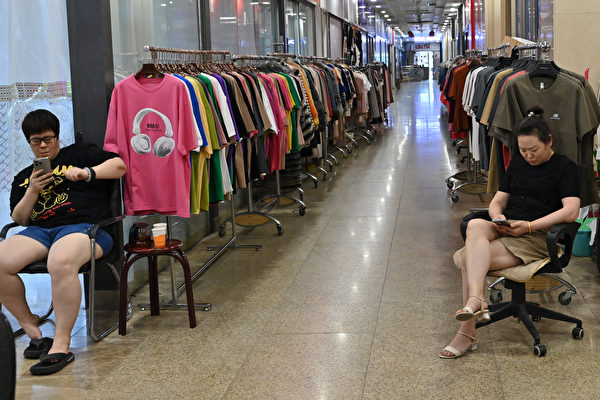Due to concerns about the economic situation in China, Chinese consumer spending continues to decline, and consumer attitudes are beginning to shift away from valuing brands. This has led to international brands like Uniqlo and Nike facing headwinds in the Chinese market, having to compete with lower-priced “white label” brands.
The ongoing slowdown in the Chinese economy was evident in data released last week, showing a key indicator of service sector activity, covering the retail industry, facing contraction for the first time since last year. The Purchasing Managers Index in July was part of the disappointing economic landscape in China.
The consumer downturn has left global brands facing subdued demand. Mid-range clothing brands that were once popular with Chinese consumers for their affordability are now struggling as consumers tighten their purse strings, leading to continued consumer downgrading. These brands in China are facing soft demand and have to compete with “white label” brands that sell similar products at lower prices. White labeling is an outsourcing type where one company produces a product and another company sells it under its brand.
Japan’s Uniqlo parent company, Fast Retailing Group, stated this month that in the nine months ending on May 31, revenue in the Chinese mainland market has been “challenging” compared to the same period last year, attributed to weakening demand and mismatched product supply with local preferences.
Bloomberg reported that Xing Zhaopeng, senior China strategist at ANZ Bank, said, “With a bleak income outlook, consumers are more focused on price rather than quality.” He noted that this trend has led to intense price wars, with “no clear path provided to increase household incomes.”
Muted economic activity and rising unemployment in China, especially the prolonged stagnation in the real estate market, are squeezing Chinese household budgets and undermining confidence, prompting many Chinese to tighten their belts. JPMorgan estimates that around 60% of the wealth of China’s urban middle class is related to real estate.
Consumer downgrading has also impacted domestic brands. China’s largest sportswear brand, Li-Ning, saw a 2% increase in sales in the first quarter, down from 6% growth in the same period last year. Popular sportswear brand Anta’s sales growth in the last quarter was 10%, half the rate of growth compared to the same period last year.
Pan Ning, CEO of Fast Retailing Greater China, stated that the increasing popularity of “affordable alternatives,” including lesser-known or no-brand clothing, has significantly affected Uniqlo and the company’s performance.
High-end brands are also facing similar challenges. Sportswear giant Nike lowered its full-year growth forecast to the mid-single digits last month, citing weakened demand in Greater China (including mainland China, Hong Kong, and Taiwan), with first-quarter revenue possibly dropping by 10%.
In the second quarter, French beauty products giant L’Oreal saw a 2.4% decline in sales in the North Asia region, including China, marking the fourth consecutive quarter of sales decline in that region. L’Oreal CEO Nicolas Hieronimus described the beauty market in mainland China as “sluggish.”
According to the South China Morning Post, Jessie Xu, head of non-essential consumer goods research at Deutsche Bank in China, said Chinese consumers are shifting towards value-for-money alternatives. She noted that shoppers are less willing to pay high premiums for brands.
“For products of similar quality, consumers prefer lower prices, and for products at similar prices, they hope for improvements and upgrades in technology or design,” Xu said.
The South China Morning Post reported that Liu Sheng, a retired resident in Beijing, buys most of her clothes from a no-brand store on Douyin, a Chinese platform similar to TikTok. She said the store’s clothing is competitively priced because it has its own factory producing clothes that mimic the cuts of major brands. “The cut may not be as chic, but the fabric feels nice, which is most important to us,” she said.
A recent report from consumer research firm Mintel shows that Chinese consumers currently prioritize functionality over fashion appeal. According to the study, about 59% of respondents focus more on products rather than brands when purchasing clothing and accessories.
Ms. Xu said that given factors like employment, income, and economic prospects not improving, the shift to more affordable alternatives may continue over the next two years.
“The key issue is job security,” she added. “People tend to tighten their belts and cut unnecessary expenses as much as possible during economic downturns.”
Bloomberg’s Chief Asia Economist Chang and Bloomberg economist Qu Tianshi stated, “Ultimately, the subdued sentiment is hindering consumption and investment by households and businesses. Correcting this issue is the most challenging task.”

